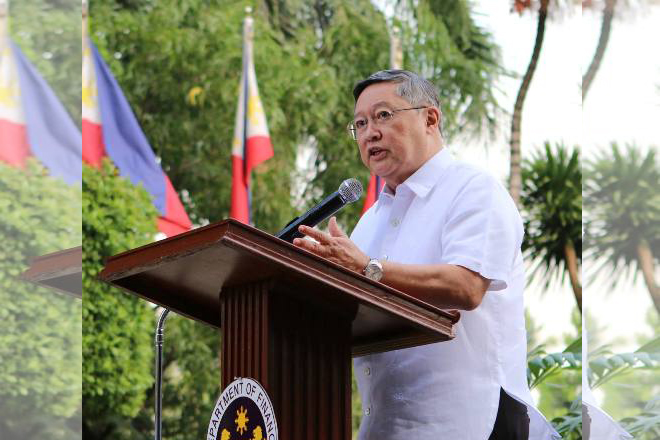Inclusive growth agenda on track with 6.8% GDP-DOF
January 26, 2017
Finance Secretary Carlos Dominguez III said the 6.8 percent growth in gross domestic product for 2016 points to a domestic economy in “pretty good shape” and well on its way to sustaining its growth momentum over the medium term, on the back of the Duterte administration’s bold initiatives to sustain its upward trajectory despite global market volatility.
“This is clear proof that no amount of counterproductive political chatter from certain quarters could undermine the upward trajectory of a domestic economy that is in pretty good shape under a Duterte presidency that is fully committed to sustaining its growth momentum,” Dominguez said in a statement Thursday.
He said the economy is well positioned to grow between 6.5 percent to 7 percent this year—as projected by most international and local financial institutions and experts—given “the government’s resolve to further strengthen its macroeconomic fundamentals and maintain solid buffers to cushion the effects of global unknowns like the coming US Federal Reserve hikes and inward-looking or protectionist policies by certain countries that could undermine international trade.”
Dominguez said the Philippine economy is founded on, among others, record dollar reserves, strong revenues from the business process outsourcing (BPO) sector and remittances from migrant Filipinos, high domestic consumption, declining debt, low inflation and solid credit ratings.
He said continued strong performance of the local economy in the first six months of the Duterte presidency—7 percent over the July-September period and 6.6 percent in the fourth quarter—underlines “the strong confidence of the business community in the Duterte presidency’s commitment to sound fiscal management and further reforms to sharpen the economy’s global competitiveness, attack poverty and achieve economic inclusion.”
“The fast GDP expansion has buoyed government expectations of meeting its growth targets in 2017 and, with the hoped-for timely congressional approval of the first package of the CTRP, of sustaining its ambitious inclusive-growth agenda to attract more investments, create enough jobs, reduce the poverty incidence by almost half, and transform the Philippines into an upper middle-income country by 2022,” Dominguez said.
Dominguez issued this statement after the Philippine Statistics Authority (PSA) reported Thursday morning that the GDP grew 6.8 percent in 2016 from 2015's 5.9 percent and 6.6 percent year-on-year in the fourth quarter from 2015's 6.5 percent.
In a report, the PSA said manufacturing, trade, and real estate, renting and business activities were the main drivers of growth in 2016's fourth quarter.
According to Undersecretary Gil Beltran, while the outlook for the Philippines remains robust, more investments in physical and social capital have to be mobilized to support and sustain the growth, make growth more inclusive, and eradicate poverty. Poverty rate was brought down from 25.2 percent in 2012 to 21.3 percent in 2015.
Beltran, the DOF's chief economist, said reforms to support growth include, among others, fiscal reforms in general and tax policy and administrative reforms in particular.
"The proposed tax reform seeks to flatten and make simpler the structure (thereby making tax administration simpler) and broaden the tax base (increasing revenue intake), he said in the DOF's latest economic bulletin. "The increased efficiency in domestic resource mobilization will help bankroll inclusive development programs, an avenue for greater economic enfranchisement especially for the underprivileged. Furthermore, strong macro-economic fundamentals have to be maintained to foster stability and enhance investor confidence in the country." DMS
Latest Videos
- THE UNTOLD STORY EXPERT INSIGHTS INTO THE UKRAINE
- NEGOTIATING A NEW ORDER US RUSSIA TALKS ON UKRAIN
- Ukraine: A Pawn in the Geopolitical Game? Will Trump Intervene?
- US VP VANCE CRITICIZES EUROPEAN DEMOCRACIES AT MUNICH SECURITY CONFERENCE
- UNCOVERING THE WEB OF DECEIT: CIA INFILTRATION OF THE MEDIA
- SHIFTING SANDS: TULSI GABBARD’S CONFIRMATION AND THE EVOLVING GLOBAL LANDSCAPE
- FAUCI SCANDAL: A THREAT TO GLOBAL HEALTH AND DEMOCRACY






